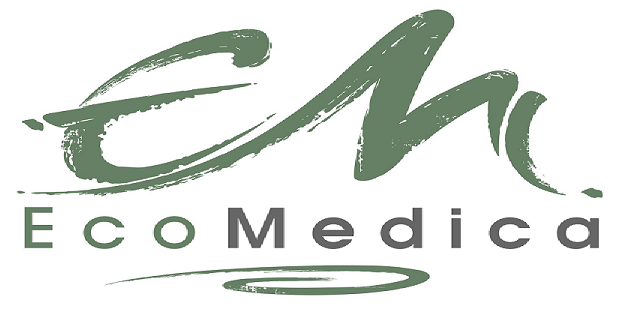If you have been diagnosed with Lyme Disease, by definition you have been infected with the bacteria known as Borrelia burgdorferi which is a spirochete. Spirochetes have a life cycle in which they can take at least one of three forms: 1) The “cyst” form where they actually resemble a small round ball, 2) the “L Form” where they are shaped like a crescent, and 3) the “spirochete” form where they resemble a corkscrew.
At this time, the virulence of the “cyst” and “L form” is not known, however, clearly, the spirochete form can cause a variety of symptoms that are individualized in people. Spirochetes probably somehow interact with the human genome which may be one of the reasons there is such variable patient presentation in Lyme Disease symptoms. After all, the backbone of DNA is ribose, a sugar molecule.
Spirochetes are considered parasites, meaning that they must inhabit a host to draw nutrients for themselves. For example, spirochetes do not manufacture their own fatty acids and therefore gravitate to areas in the host where there is a high density of fatty acids like the myelin sheath that coats nerve cells in the brain. This is called “neurotropic behavior”.
Borrelia burgdorferi is also known to use glucose to sustain life. This means that the organisms require and feed on sugar consumption. Fruits and vegetables are natural sugar sources but contain other necessary nutrients for the body. Maintaining a daily healthy balance of fruits and vegetables is important for nutritional needs and should be an integral part of your diet. However, consumption of Coke, cookies, cakes, pies, candies, etc… contains processed sugar and should not be a part of your healing diet. If you seek these types of foods, you may need to slowly wean yourself off of them in a manner that is not abrupt, but rather gradually over time.
Once you have weaned yourself off of these foods, you may continue to have cravings for these foods. Dr. Marra counsels her patients that if they simply cannot manage without a treat once in a while, developing a schedule where once or twice a week a sugar snack can be enjoyed may be useful. Any more often than that, the bacteria will use the sugar for their own growth and replication. Therefore, in order to minimize the extent that you “feed” these bacteria, you want to decrease sugar consumption.

Additionally, sugar is known to be immunosuppressive which is not beneficial to you while healing from Lyme Disease. Sugar substitutes such as Manuka honey, agave, and maple syrup can taste just as good and can be used in cooking and baking. Additionally, these substances actually have many nutritional benefits as well.
Wondering what you can snack on? Go to https://whatthebleepcanieat.com/ .
Generally speaking, dairy products (derived from cows) are not beneficial to Lyme Disease patients. Dairy products are full of sugars such as maltose, galactose, and glucose, and also increase the production of mucous that fosters biofilm growth and bacterial replication. Substitutes for dairy can include goat milk, almond milk, goat cheese, and sheep cheese which can be found at any whole foods market.

Wheat products are aggravating and proinflammatory to existing inflamed tissues. The protein in wheat known as “gluten” can actually cause severe abdominal cramping and diarrhea, especially if spirochetes have invaded the intestinal wall, allowing for food molecules to enter the bloodstream. Substitutes for wheat can include rice pasta, bread, chips, and cakes. Quinoa and millet grains are also excellent choices. Wheat is both a grain and a carbohydrate, and carbohydrates are quickly converted into sugars after digestion begins to take place. Avoidance of all wheat is perhaps the most important dietary change that you can make to help yourself heal from tick-borne infections.
Rainbow Foods: excerpted from Dr. Kenneth Singleton’s book: “The Lyme Disease Solution.”
Rainbow foods are highly recommended while undergoing Lyme Disease treatment for nutritional purposes. If you are allergic to any of the foods, simply eliminate them as you normally would.
- WHITE FOODS – coconut flesh (fresh, dried), coconut milk and oil for cooking, organic plain yogurt, Kefir, and soft cooked eggs.
- RED FOODS – apples, cherries, raspberries, red peppers, strawberries, tomatoes and watermelon.
- ORANGE FOODS – apricots, cantaloupe, carrots, mango, pumpkin, sweet potato, yams and mangosteen juice.
- YELLOW FOODS – curry, dandelion, egg yolk, lemon, pineapple, and yellow squash.
- GREEN FOODS – broccoli, celery, chard, kale, chlorella, cucumber, dark greens, Granny Smith apples, green tea, kelp, seaweed, lime, and olives
- BLUE FOODS – blueberries, bilberries and blackberries.
- PURPLE FOODS – plums, pomegranates, prunes, purple grapes and raisins.
- BROWN FOODS – beans, brown rice, barley, Ezekiel bread, oatmeal, quinoa, sprouted grains, fermented soy, miso, natto, tempeh, garlic, ginger, nuts, seeds, grass fed meats and poultry and wild caught fish low in mercury.


